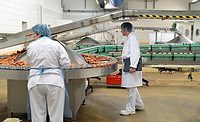If you use metal detectors, don't go it alone

Metal detection has become an integral part of most food processing operations. In fact, many companies mandate every ingredient they buy must be run through a metal detection system. This business practice can protect raw materials, finished goods and your brand.
But how do you choose the right metal detector? They may be used to detect metal in liquid systems, powders that flow, pieces of meat, fruit or vegetables and packaged products. To select the right tool for the right application, processors must understand not only their products but also the capabilities of metal detection technology.
The very nature of some products can cause a metal detector to reject them and interfere with the detector's sensitivity. Products that may cause this kind of reaction-known as a "product effect"-are those with high moisture content such as meat, cheese, warm bread, fresh produce and most liquids. The detector can be adjusted to minimize this effect, but its achievable sensitivity will be reduced.
Low-moisture products such as cookies, fried snacks, sugars and cereals have little product effect and can operate at greater sensitivities. Frozen foods also have little product effect since their moisture is bound up.

In another example, a processor decided to install a metal detector on a line handling sauces with particulates. The processor did the set-up on its own and adjusted the sensitivities to the lowest possible detection limit. This operation also had problems. With the supplier's help, the processor adjusted the sensitivity upward and made changes to the software, solving the problems.
With metal detection becoming mandatory, processors must do everything they can to get their systems working properly from the very beginning. This means understanding products and the basic principles of metal detection and taking advantage of the expertise offered by suppliers. Remember one of the primary corollaries to Murphy's Law: "There is never time to do it right, but there is always time to do it again."
Looking for a reprint of this article?
From high-res PDFs to custom plaques, order your copy today!







